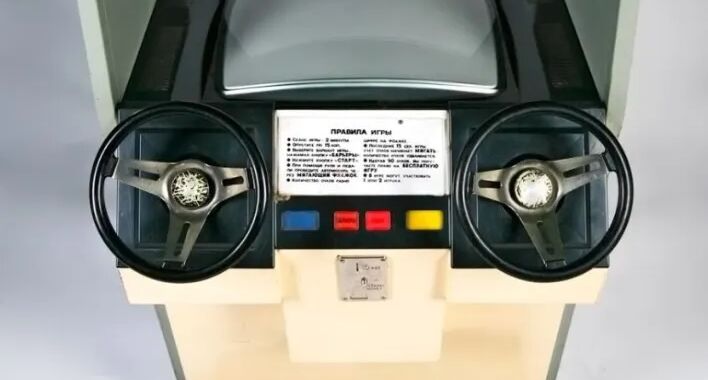Expansion / A Cold War-era arcade cabinet, one example of the last time Russia was forced to create a home-grown video game market. More than two years have passed since the international gaming industry’s biggest players banded together to all but shut off the Russian market at the urging of beleaguered Ukraine. Relative isolation appears to have forced Vladimir Putin’s government to consider the homegrown gaming hardware and software that defined Cold War-era gaming behind the Iron Curtain.
PC Gamer reports on a series of Russian economic orders recently approved by the Kremlin. Amid talk of funding for airports and museums, shipping and road construction, there’s the somewhat puzzling directive given to the government (machine translated):
The committee will consider establishing production systems for home and portable game consoles, as well as building operating systems and cloud systems for delivering games and programs to users.
Ah, that’s it?
A large-scale effort
Gaming tech isn’t an entirely new area of focus for the Russian government – in 2022 the Ministry of Digital Development reportedly began discussing the possibility of developing a home-grown game engine in Russia – but building an entire gaming platform from scratch would be an even bigger undertaking.
To be fair, building your own games console is a bit easier today than it would have been at other times: open source platforms such as Android provide a great starting point for a bespoke gaming operating system (which worked to some extent on Ouya), and off-the-shelf system-on-chip solutions can save a lot of the hardware engineering work required to develop a new console.
But even if these issues are “solved,” the Russian government still needs to build another layer of foundation for a robust gaming platform. Building out payment processing, game downloads, online play, moderation, quality control, and more is no small task, even for major conglomerates like Microsoft and Valve. And that’s before they even attract the developers who will need to create actual games for this new platform.
Building a scaled/bare-bones Steam Deck competitor isn’t nearly as hard as building a platform to support that hardware.
valve
“There is no one in Russia with the expertise to independently manufacture a gaming console at the level of a PlayStation or Xbox” (machine translated) Anton Fomin, head of retail projects at mobile phone company Fplus, told Russian-language newspaper Kommersant. An anonymous expert source also told Kommersant that to build a complete system, it would take five to ten years and cost 5 to 10 billion rubles ($54 to $108 million) just to get the gaming platform, which is “10 to 15 years behind in terms of parameters compared to existing foreign solutions.”
The fact that Russia is considering such a move may reflect the broader state of the country’s gaming industry. A 2023 survey found that as legitimate access to foreign games dwindles, a majority of Russian gamers are turning to pirated versions for gaming addiction. Last year’s Russian job posting data also suggested that domestic game development in Russia has declined by up to 40% since the start of the Ukrainian war. But this is not the first time that Russia has been forced to bootstrap its own gaming industry. Cut off from the Western gaming market at the end of the Cold War, Soviet engineers created hundreds of amateur computer games, including a variety of bizarre arcade machine imitations and some with surprisingly activist themes. If that era of Russian gaming gave birth to something like Tetris, maybe the idea of a new Russian gaming platform isn’t entirely absurd.
The Russian government has until June 15 to make a recommendation on the feasibility of the plan to develop a domestic games console.

